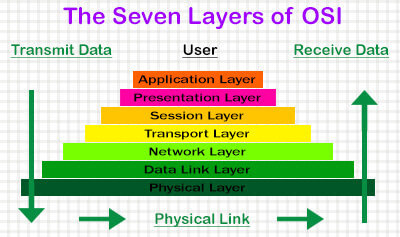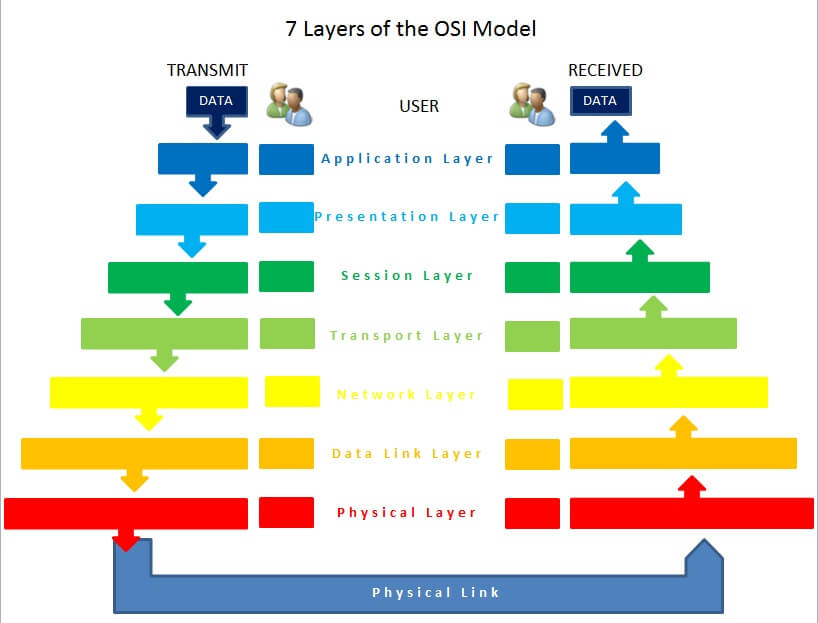OSI or Open System Interconnection model represented in seven different layers forms the basic definition for the standard networking framework. Every network today abides by the OSI model, stipulated by International Organization for Standardization (ISO). This method is nothing more than a conceptual framework and has no part to play in the networking process.
The OSI model was created with the primary aim of laying a reference path for all the different product vendors to work on common lines. The seven layers are associated with a particular set of tasks and protocols and are directly linked to each other. In this article, we talk about each of the seven layers of OSI model.
Physical Layer – Layer 1
The physical layer is the lower most layer of the OSI model. This layer is concerned with the hardware and its entire operation is limited to sending and receiving bits (1s and 0s).
The physical layer describes the electrical, mechanical and various functional requirements for undertaking all the communications (i.e. data transfer) between systems.
Data Link Layer – Layer 2
The data Link layer is on top of the physical layer and ensures transfer of data between various modules via the physical layer. The encoding of bits while moving down the layers and the decoding while moving up the layered stack to reach the destination is controlled by the data link layer. Internally this layer is further divided as Media Access Control (MAC) layer and the Logical Link Control (LLC) layer.
Network Layer – Layer 3
This layer particularly determines the way in which data is to be sent to recipient devices. This layer knows the addresses of all the neighbor nodes, within the network.
The various operations such as routing and forwarding, addressing, error handling and packet sequencing are taken up at this layer. It is in the network layer, protocols like IP, DHCP, RIP, MARS etc. work.
Transport Layer – Layer 4
This layer allows the transparent, lossless, error-free transfer of data. It also has the ability to split the message received from the above layers into smaller units before passing on to the network layer.
Of the various protocols the UDP and the TCP are the most commonly known protocols that work in this layer.
Session Layer – Layer 5
The session layer controls all the connections between applications. It establishes, manages and also terminates these connections. Each such connection is called a session and hence the name, session layer.
The common protocols within the session layer include the DNS, SQL, NFS etc.
Presentation Layer – Layer 6
This layer translates the data from the lower layers into standard form which the application layer can understand and vice-versa. This layer completely offers translation services and helps the application layer communicate with the other layers below it properly.
The other notable functions that are present within this layer help in data compression and decompression, data encryption and decryption.
Application Layer – Layer 7
This is the layer which interacts with the operating systems or applications in computers. This layer is the top most layer of the entire OSI layer model and is probably the more sophisticated one among the lot.


